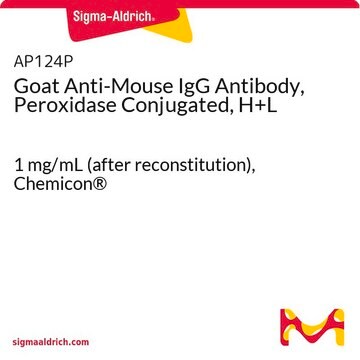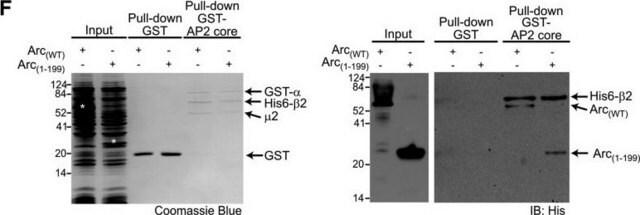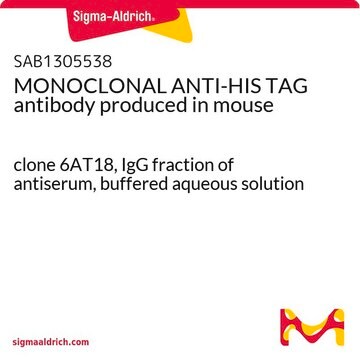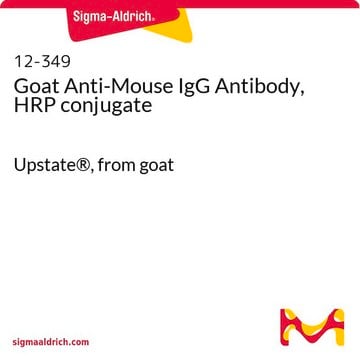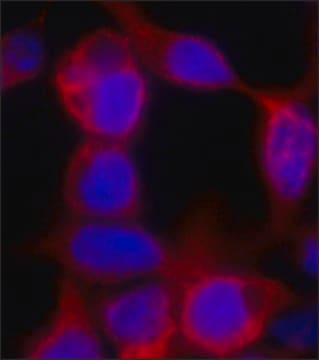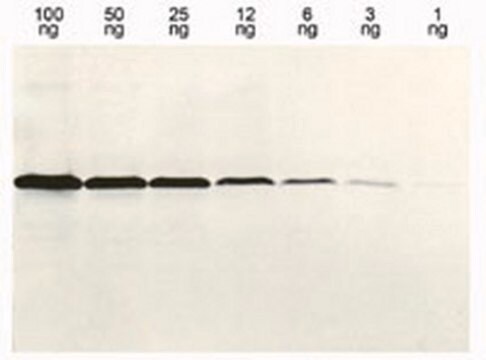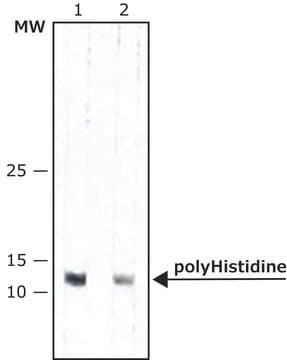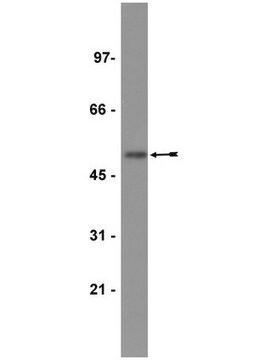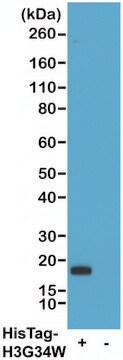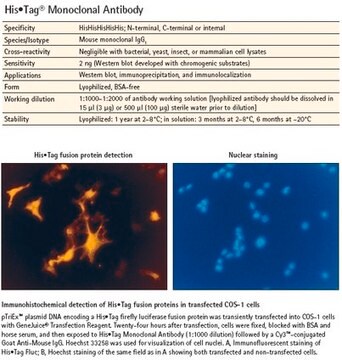11922416001
Roche
Anti-His6
from mouse IgG1
Synonym(s):
metal chelate affinity chromatography
About This Item
Recommended Products
biological source
mouse
Quality Level
conjugate
unconjugated
antibody form
purified immunoglobulin
antibody product type
primary antibodies
clone
monoclonal
form
lyophilized
packaging
pkg of 100 μg
manufacturer/tradename
Roche
isotype
IgG1
storage temp.
2-8°C
General description
Specificity
Application
- Immunoblotting (e.g., dot blots and western blots)
- Immunoprecipitation
- Immunoassays (ELISA)
- Immunocytochemistry
- Immunofluorescence
Preparation Note
Working concentration: Working concentration of conjugate depends on application and substrate.
The following concentrations should be taken as a guideline:
- ELISA: for detection 0.1 μg/ml; for coating 1 to 5 μg/ml
- Immunoprecipitation: 0.5 to 5 μg/ml
- Western blot: 0.2 to 0.5 μg/ml
Reconstitution
Other Notes
Not finding the right product?
Try our Product Selector Tool.
signalword
Warning
hcodes
Hazard Classifications
Aquatic Chronic 3 - Skin Sens. 1
Storage Class
11 - Combustible Solids
wgk_germany
WGK 2
flash_point_f
does not flash
flash_point_c
does not flash
Certificates of Analysis (COA)
Search for Certificates of Analysis (COA) by entering the products Lot/Batch Number. Lot and Batch Numbers can be found on a product’s label following the words ‘Lot’ or ‘Batch’.
Already Own This Product?
Find documentation for the products that you have recently purchased in the Document Library.
Customers Also Viewed
Our team of scientists has experience in all areas of research including Life Science, Material Science, Chemical Synthesis, Chromatography, Analytical and many others.
Contact Technical Service